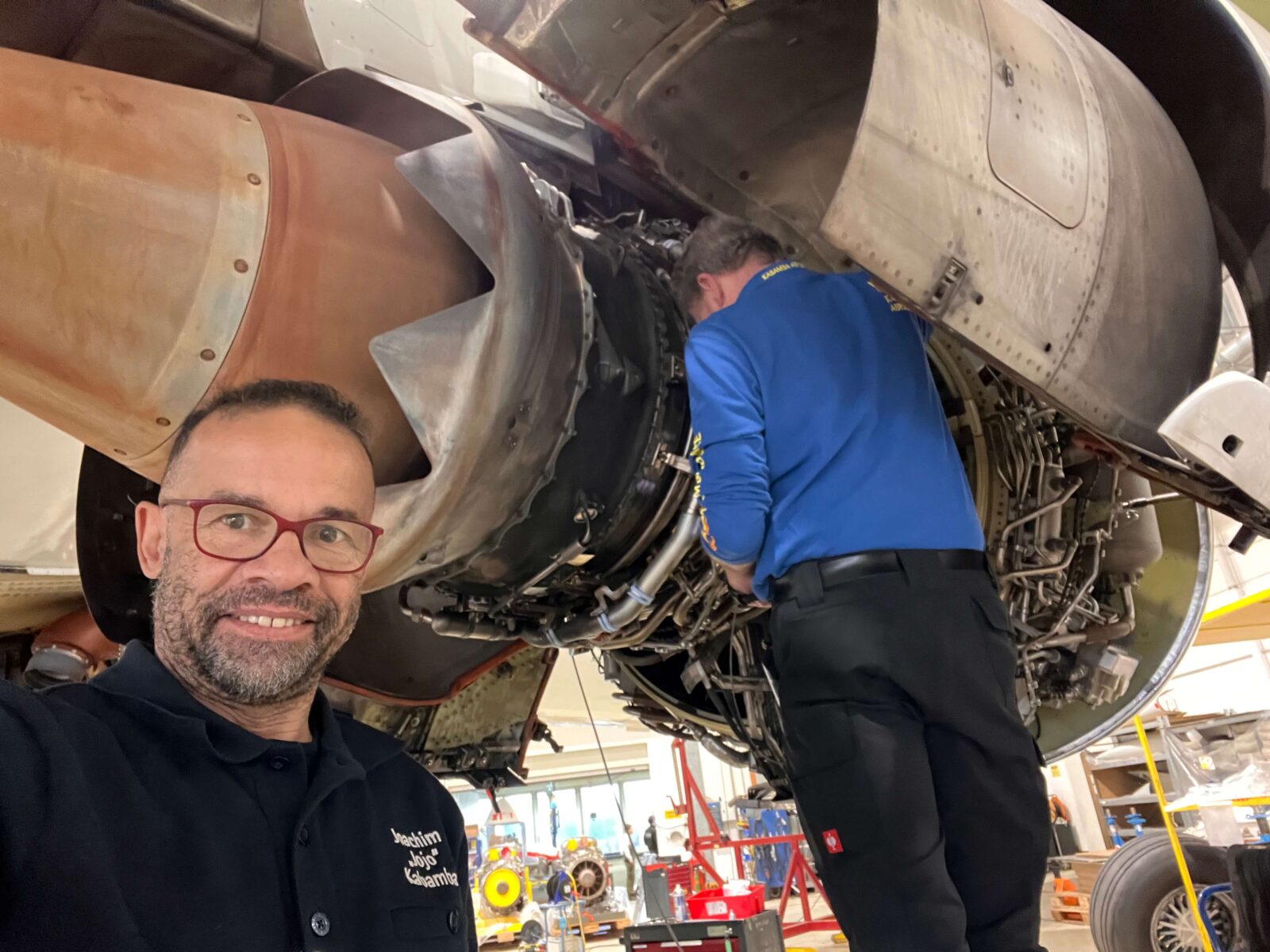In aviation, reliability and performance are paramount. Behind the scenes, a crucial player in keeping aircraft airborne is the CF34 engine, renowned for its robustness and efficiency. Let’s look into the realm of CF34 engines to understand their origins, applications, maintenance, and the value they bring to the skies.

General Electric – the Makers of CF34 Engines
CF34 engines are manufactured by General Electric (GE), a major player in the aerospace industry. General Electric is a leading manufacturer of aircraft engines, known for their innovation and reliability in the aerospace industry. Their engines, including the Catalyst, Passport, CF34, GE90 and GEnx, power a significant portion of the world’s commercial airliners, providing efficiency and performance improvements.
In general, GE engines are known to be withstanding high combustion temperatures thus contributing to more sustainable aviation by reducing fuel consumption and emissions. Since their inception in the late 1980s, these engines have continually evolved, setting new standards for aviation propulsion.
Aircraft Equipped with CF34 Engines
CF34 engines find homes in a variety of aircraft, including regional jets like the Bombardier CRJ series (CF34-8C) and the Embraer E-Jet family (CF34-8E, CF34-10A & CF34-10E). Their versatility and reliability make them a popular choice among airlines seeking optimal performance and fuel efficiency in their fleets.
Defining Characteristics of CF34 Engines
The original engine featured a single-stage fan powered by a four-stage low-pressure (LP) turbine, which boosted a fourteen-stage high-pressure (HP) compressor driven by a two-stage HP turbine, all within an annular combustor. Later, more powerful versions of the CF34 incorporated an advanced technology core with only ten HP compressor stages.
The most recent models, the -10A and -10E, evolved from the CFM56 engine family and have a significantly different HP spool, consisting of a nine-stage compressor driven by a single-stage turbine, while the LP spool includes three core booster stages behind the fan. The -10E variant delivers a static thrust of 82 kilonewtons (18,500 lbf).
Maintaining Peak Performance: Borescope Inspections
Regular maintenance is key to ensuring CF34 engines operate at peak performance. Borescope inspections, which involve examining internal components for wear and tear, are a key element of preventive maintenance. Borescope inspections are conducted at regular intervals to detect potential issues early on and avoid unscheduled engine removals.
Identifying Components subject to Elevated Wear and Tear
While CF34 engines are renowned for their reliability, certain components are more prone to wear and tear. HP Turbine Stators and HP Turbine Blades, for example, are subjected to high levels of stress during operation and require continuous monitoring to detect signs of fatigue or damage.
CF34 Engine Maintenance Consulting Contracts
For airlines seeking comprehensive support and peace of mind, CF34 Engine Maintenance Consulting Contracts offer valuable benefits and signifcant reduction in direct maintenance cost. These agreements provide access to expert guidance, proactive maintenance strategies, and timely support, ultimately optimizing the lifespan and performance of CF34 engines.


